Why the ‘weird puzzle’ of Apple’s new anthology took up to 40 rewrites to get right
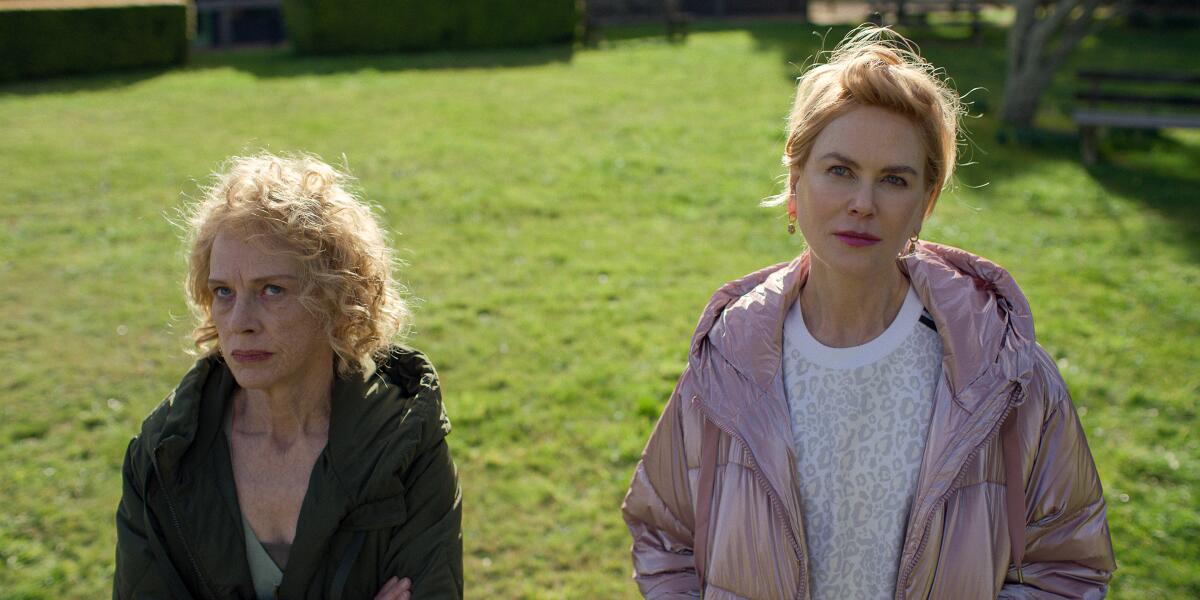
A medical school student in an abusive relationship with a duck. A trophy wife who spends her days sitting on a shelf for her husband to admire. A daughter caring for her ailing mother who begins to eat family photographs to relive happier times.
These are some of the protagonists of “Roar,” an anthology series from “GLOW” showrunners Carly Mensch and Liz Flahive now streaming on Apple TV+.
The star-studded cast is stacked with talent including Issa Rae, Cynthia Erivo, Merritt Wever, Alison Brie and Nicole Kidman, who also serves as executive producer. Having the Oscar winner sign on made it easy to attract talent, Mensch says.
“And I think the anthology format lends itself to that because you can hand somebody what feels like a minimovie,” she said. “Every one of those actors is in every single scene of their story, which I think is exciting and rare.”
Mensch and Flahive were still working on the third — and as it turned out, final — season of “GLOW” when they were sent a copy of the Cecelia Ahern book the show is adapted from. “We’re usually very monogamous when we’re making things,” said Flahive. “But it felt like a weird puzzle that we wanted to solve, which was exciting. ... The idea of making stand-alone episodes made diving into an anthology series sound possible. We felt like our brains could toggle between those two shows.”
In actuality, working on such drastically different series concurrently was “so hard,” she said. “It was literally like an intensive eight-day film shoot with no break,” said Mensch. “Then the next day, we’d start a completely different film with different rules, looks, actors, director.”
Mensch and Flahive wrote five of the eight episodes and enlisted established writers such as Janine Nabers, Halley Feiffer and Vera Santamaria to collaborate on the rest. Santamaria’s episode, “The Woman Who Returned Her Husband,” about an Indian woman in her 60s who returns her husband to a Costco-like superstore, opens with a shot of her daughter celebrating her gallery opening.
“I really like that we start on this younger woman and it’s the thing you’ve seen before, and then it opens up like, ‘Actually, this woman is just as important,’” she said. “She has a story of her own and is worth following. Let’s follow her for once.”
“I could relate to the emotion in it,” she added. “Just this feeling of exploring, ‘Is there still a chance for me at this stage of life?’ As women, we are socialized to believe that there are so many markers that we’re supposed to hit in our lives, and then there’s a point where it’s like ‘Don’t try to make any big changes, just ride it out.’ I want to believe that at any stage of your life you could go after the life you want.”
The Times caught up with Mensch, Flahive and Santamaria to discuss what it was like to anthologize female experiences across different backgrounds and genres.
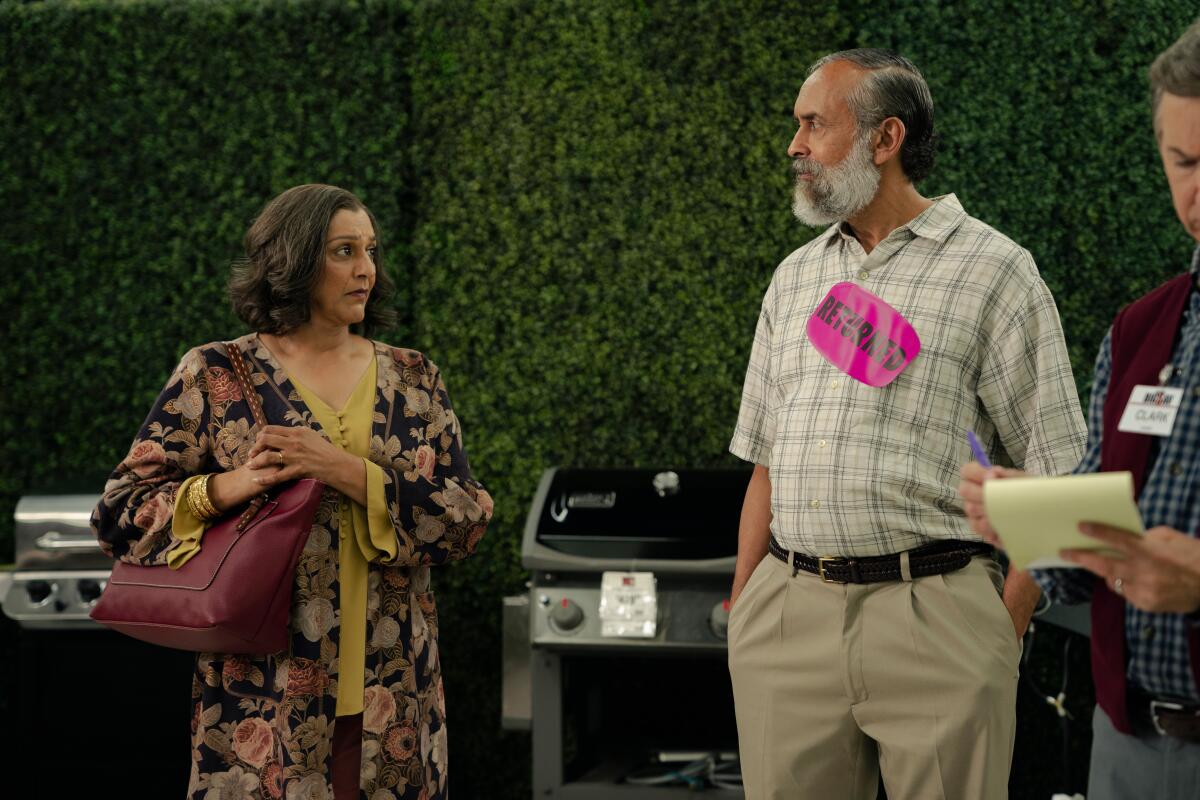
Coming off of “GLOW,” how were you able to apply what you learned about your relationship as co-showrunners to this new anthology format?
Liz Flahive: With “GLOW,” everyone was like, “Oh, there are two of you, you’ll get to divide and conquer,” which we never did. We were always like, “We’ll do that together. We’ll also be in that meeting together. We’d also like to see that rehearsal together.” We hardly ever split up.
Carly Mensch: Because we’re very different people with very different opinions. And we found that the best answer usually lies in the debate, where we land after we’ve duked it out.
Flahive: But thankfully, we also had three powerhouse writer-producers as well. A lot of times now in anthologies, it’s harder to hold onto writers to produce their episodes because those writers will contractually be done before you start filming. We fought very hard to make sure we kept Vera, Janine and Halley on set for their episodes so they could produce because coming up in the house of [“Orange is the New Black” creator] Jenji Kohan, we saw how valuable it was.
The show refreshingly avoids the kind of one-note feminism that arose in films made in the wake of the #MeToo movement. How did you make sure you represented an intersectional cross-section of the female experience?
Mensch: It’s really tricky. These are fables, which means on some level these 30-minute stories have to be reductive in some way. We were really focused on making sure to leave the characters and the stories complicated and open-ended when we could. And to rely on our writers for different perspectives than Liz and I could bring and to let them express stories that felt true to them without over-imposing anything about what the show should be or what the message should be.
Vera Santamaria: Seeing people who look like me has always been why I got into TV writing. So to be able to put out this story and have a woman who’s in her 60s, we’re getting to push the boundaries of what we’ve seen so far, and that really means a lot to me. It feels special. I have ownership, and it feels like something really personal.
Flahive: This is the first time we’ve adapted something, so we had to find our own personal way into the book. The first one we adapted was “The Woman Who Found Bite Marks,” which obviously changed and adjusted as we cast Cynthia [Erivo] and brought Rashida Jones on to direct. We all worked together to tailor that character to Cynthia specifically. And then when we sent the book to Janine and Vera and Halley, we had them read the book and tell us which stories they connected to.
Mensch: We really wanted to be open to surprises and we often were. And I think a perfect example is “The Woman Who Disappeared,” Janine’s episode. The short story is based on aging and how women disappear from society the older they get, and she right away saw it as a race story. We let her run with it because that was what excited her and what spoke to her.
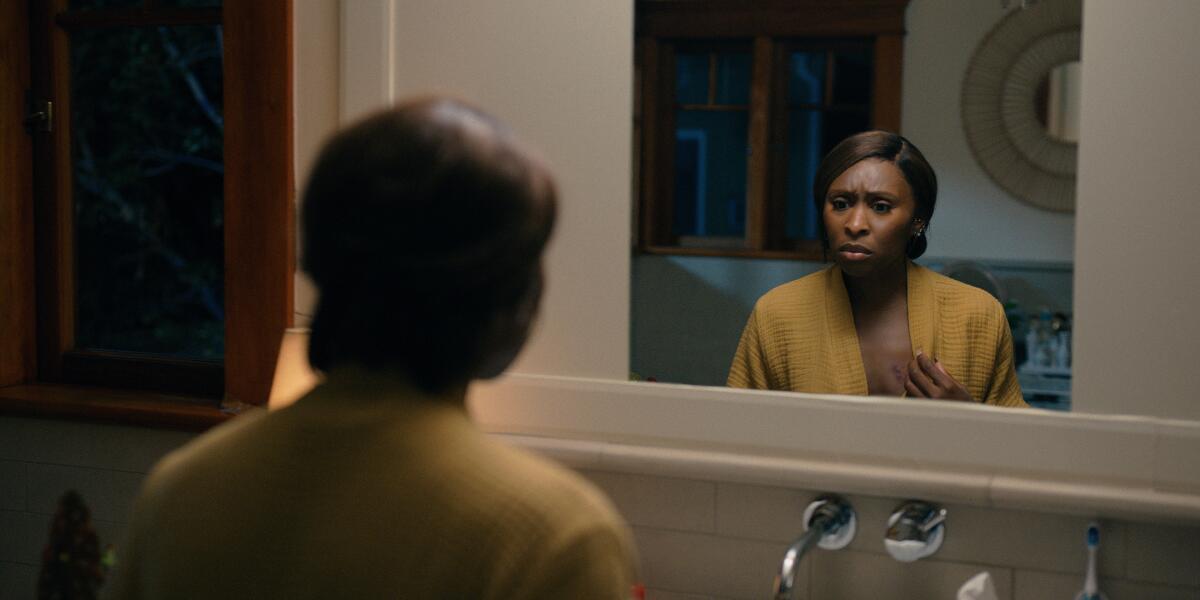
How did the use of supernatural elements help make these interior struggles relatable to women from different walks of life?
Mensch: There’s something accessible about genre that kind of erases some of the realities that divide people and that allows for a larger, collective, imaginative journey. The intention was to take something specific to a single woman and amplify it so big that other people could find resonance with it.
Flahive: There’s something about being forced to externalize things and literalize things that actually made certain things feel bigger in a way that was exciting and allowed you to be a little bit more playful. We got to have a kind of fun dealing with maternal guilt because we were externalizing that idea by it physically manifesting on [the character’s] body.
Santamaria: I think the episodes are able to be more pointed because of the use of the fantastical and supernatural elements. Some of the emotions are things that we’ve all navigated, but to see it carried out in this extreme, literal fashion really helps you say something loud and clear, which speaks to the title of the show.
I’ve never done cocaine, but I assume directing feels like being on cocaine.
— Liz Flahive on directing an episode of “Roar”
How did you go about deciding on writers and directors to collaborate with?
Mensch: We really wanted writers to connect personally to these stories because they were very idea-driven. And they were really in need of not just emotional fleshing out, but really bringing an emotional urgency to them. Our hunch was that people who strongly related to something would able to do that more effectively.
Santamaria: They were like “Tell us which story speaks to you,” and I really got to make what I wanted to. That’s not always the case when you’re doing a show with a big writers room. So this feels like a piece of personal writing.
Mensch: A lot of the intentions at the beginning of this project were around giving opportunities to women. So we focused on a mixture of the more high-profile directors, like So Yong Kim, and newbies. Our [director of photography] Quyen Tran got to direct, and this was her second time in television. Kim Gehrig, who directed Nicole Kidman’s episode, had largely done commercials, so this was a pretty big break for her. Channing Godfrey Peoples, whose film “Miss Juneteenth” we were obsessed with, was relatively new to TV; Rashida Jones is somebody who obviously has had a ton of experience in the industry, but had not done a ton of episodic [TV]. Liz directed for the first time. So on the directing front, we did a bit more of, “How can we give enough support to women with less experience?”
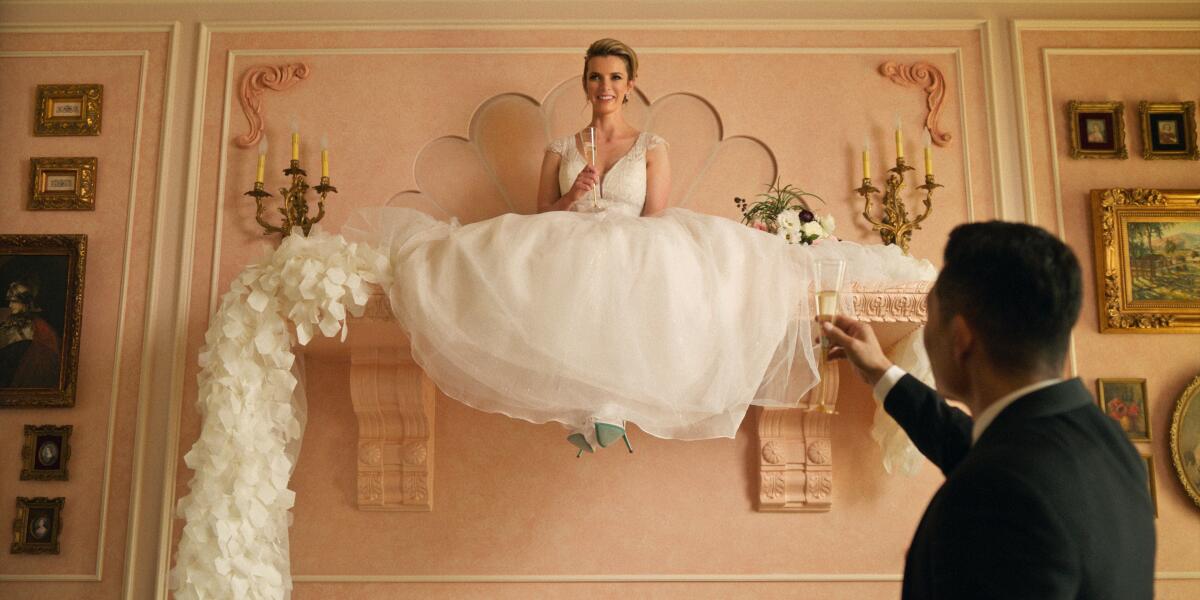
The two of you wrote the majority of the episodes. What was that writing process like?
Mensch: The writing process was happening during COVID. I gave birth during that window. [With] “The Woman That Was Kept on a Shelf,” Liz and I rewrote that episode 40 times because we couldn’t crack it. It was so new for us. It was a visual from the book that really stuck with us and that we loved that felt like an amazing cinematic dare. But we couldn’t figure out the best way to honor the metaphor without denigrating trophy wives. We’d keep writing, and I’d feel like we were still judging too much. There was a brief period of time where we thought it should be about Melania Trump.
Flahive: Which was actually fun for a couple of drafts. We got out a few things.
Mensch: The first episode we wrote was “The Woman Who Found Bite Marks.” That was really close to us both being working moms struggling with the balance. Once it became about a Black woman struggling with the maternal healthcare system, there were things that were more outside of our experience. But that episode came out pretty quickly and easily because we were so close to it, whereas ones like “Shelf” took insane amounts of rewriting.
Liz, what was it like switching gears from writing and showrunning to directing Episode 5?
Flahive: It was scary and thrilling every single day. I’ve never done cocaine, but I assume directing feels like being on cocaine. There’s so much adrenaline, so much to do, so many things coming at you. It was really, really joyful for me, even though it was incredibly hard to do both jobs at the same time. I also was working with Merritt Wever, who is a genius and a very close friend. So I feel like having somebody who I had a real closeness and a lot of trust with was very helpful. And being a showrunner directing for the first time, your crew is really behind you.
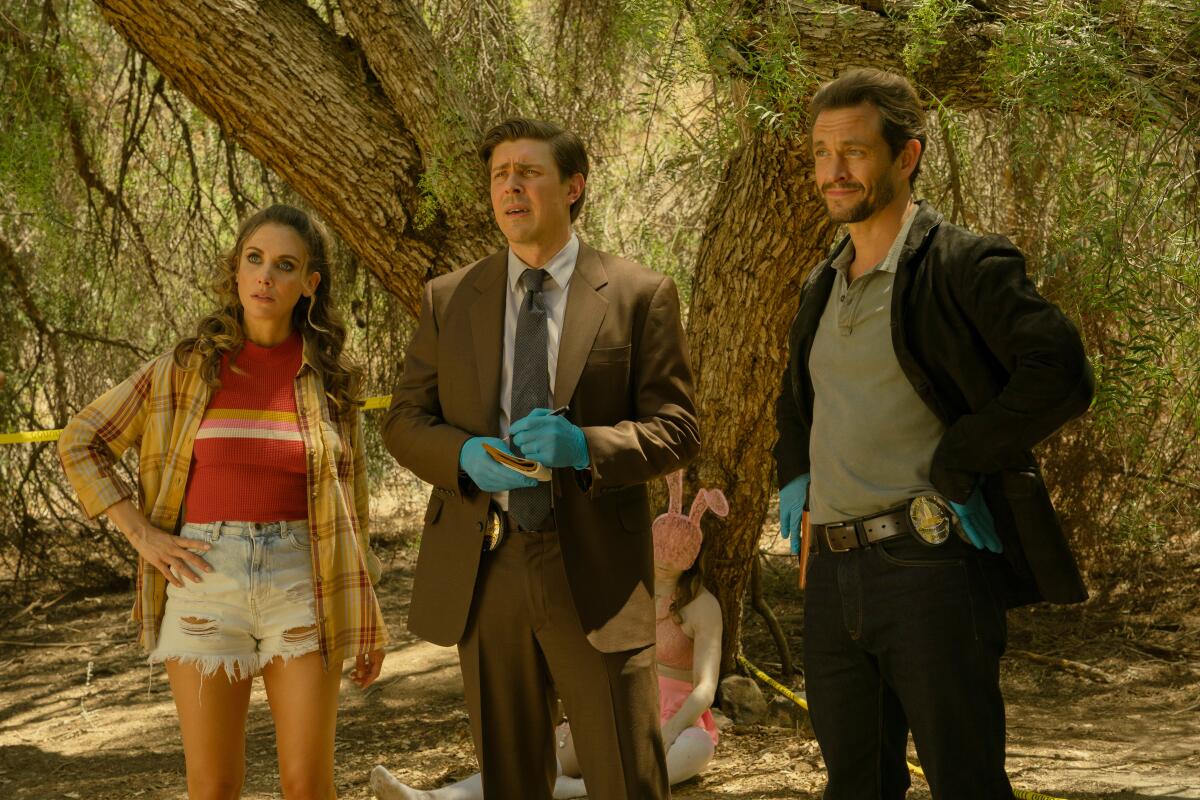
What was the hardest episode to execute?
Mensch: I feel like we sound like whiny complainers when we say all of them were difficult, but it was all of them all at once. We filmed the Western in a heatwave that was like 100-something degrees, and these poor teenagers are in leather and period garb. From that to Liz flying to Australia to direct, and suddenly COVID hit and they lost all their locations overnight. To the seven ducks that needed to be trained over the course of many weeks to do simple things like wake up, walk, listen.
Flahive: To figuring out the logistics of the shelf and the height for camera and how we were going to visually tell that story and mechanically make that viable for us.
Mensch: It felt like we almost never got a break which is why I feel like the reverse of that question is probably more honest, like, “Did you have one episode that let you breathe?”
Did you?
Flahive: No.
Mensch: I think the closest we got was “The Woman Who Solved Her Own Murder.” Just because we had Anya Adams who directed on “GLOW” and Alison Brie, also from “GLOW” And then day one on set, the first scene we did didn’t work at all and it was like “Whoa, we need to actually take a pause.”
Is there any chance of a Season 2 or was this meant as a limited series?
Mensch: We’re hoping that these are eight stories that are satisfying within themselves but that you want more.
Flahive: I think on some level when you’re making something, you’re always protecting your heart like, “Oh, well if this is it, great.” And on the other hand you’re like, “But we’ve got a lot more to do!” There are a lot of other stories under this umbrella that we could tell and a lot of other writer-directors we could work with.
More to Read
The complete guide to home viewing
Get Screen Gab for everything about the TV shows and streaming movies everyone’s talking about.
You may occasionally receive promotional content from the Los Angeles Times.







